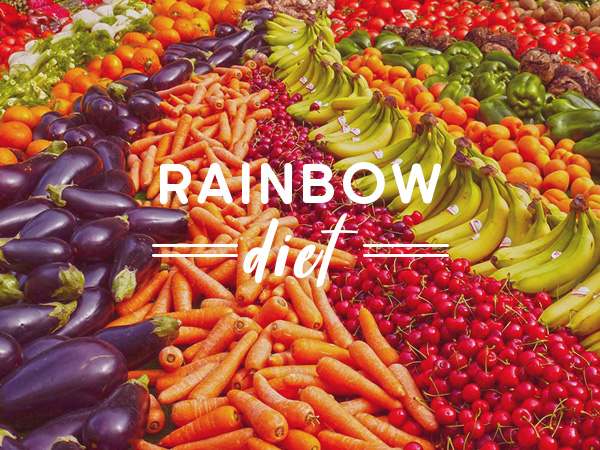
There is an astounding variety in terms of colours in natural produce – there are fruits and vegetables for every colour of the rainbow! But did you know – the more colourful your food, the greater the nutrient richness in your meals? Apart from making your meals beautiful, incorporating as many colours of fruits, vegetables and grains will ensure that you get all the micronutrients (vitamins, minerals, antioxidants, etc.) that you need from your diet. Read on to know more about this healthy diet for women !
Micronutrients are usually an ignored bunch, but they are important for overall health and longevity. The rainbow diet is not really a diet in the traditional sense, it’s more of a thumb rule you can use for planning your meals on a daily and weekly basis, ensuring are getting all the micronutrients in your food that are hard to track otherwise.Let’s find out what these micronutrients are and how youcan get them by eating more colourfully!
Understanding the rainbow diet
Fruits and vegetables get their colours from phytochemicals which are important micronutrients, essential for skin, hair, nails, heart, immune system and overall health of the body. Instead of losing your mind trying to track individual nutrients, all you must do,is to ensure you eat natural foods of every colour over time. Note that colours in packaged/processed do not count as they contain artificial colours and possibly no micronutrients.
Let’s look at the eating options as per the colours of the rainbow (VIBGYOR) and their respective benefits:
Violet, Indigo and Blue (V, I, B)
Blue and purple foods contain flavonoids, anthocyanins, quercetin, and lutein which help fight inflammation, battle oxidative stress in the body, boost general eye health and support the immune system. Get your fix of blue and purple from brinjal, black grapes, blueberries, black berries, purple cabbage, plums and fresh figs.
Green (G)
Green, the colour of freshness and life, is an important colour to consume. Green fruits and veggies contain many B vitamins including folic acid, minerals like iron, zinc, magnesium and calcium, lutein and fibre. They are typically low calorie, and alkalising (helping balance the acidic nature of our modern diets). Get your greens from spinach, lettuce, green capsicum, beans, parwal, dudhi, broccoli, kale, avocado, peas, bhindi (okra), cabbage, fresh dhania (coriander, cilantro) and peas.
Yellow and Orange (Y, O)
Yellow may be mellow, but it’s pretty revitalising for your health. Yellow and orange foods contain carotenoids, which are known for their anti-cancer benefits and their ability to become vitamin A in the body. Yellow and orange foods are important for eye health, heart health and good skin and healthy bones.To include yellow and orange in your diet have mangoes, papaya, pumpkin, yellow capsicum, corn, lemons, oranges, kinoo, peaches and kharbooz (musk melon).
Red (R)
Red maybe listed last here but it’snot the least important colour to consume. Red foods like tomatoesand watermelons tend to contain lycopene, a powerful antioxidant that will keep your cells healthy and young. Red berries like cranberry or strawberries contain ellagitannins that are being studied fortheir role in prevention ofcancer. Beetroot juice is known to lower blood pressure and increase stamina and improve post exercise recovery. Red fruits and veggies also contain folic acid which is now known to be an essential nutrient most people don’t get enough of. Hit the reds in your rainbow diet with tomatoes, cherries, watermelon, beetroot, apples, strawberries, raspberries, cranberries, red mulberry(shahtoot), pomegranate, red capsicum, red rice, and red pears.
How to eat the rainbow diet? – A Healthy Diet for Women
Now you know that the healthiest ways of eating are those which have all the colours of the rainbow in the food. The way to eat the rainbow diet is to incorporate at least three colours every day and all the colours over a week. So, when you plan your cooking and meal preparation for the next week, use these lists of coloured foods to make sure each colour is represented in your meals. This will maximise the chance that you are getting all the important nutrients that you need to stay healthy. Eat a mix of cooked and raw food for the maximum benefits. You can increase the raw food content of your rainbow diet by adding healthy (and colourful) salads as snacks or appetisers. Eat well, eat colourful and stay healthy!
The author of the article, RIddhi Kaul, writes on food, nutrition and health on her blog – AuroraSeek.com






,